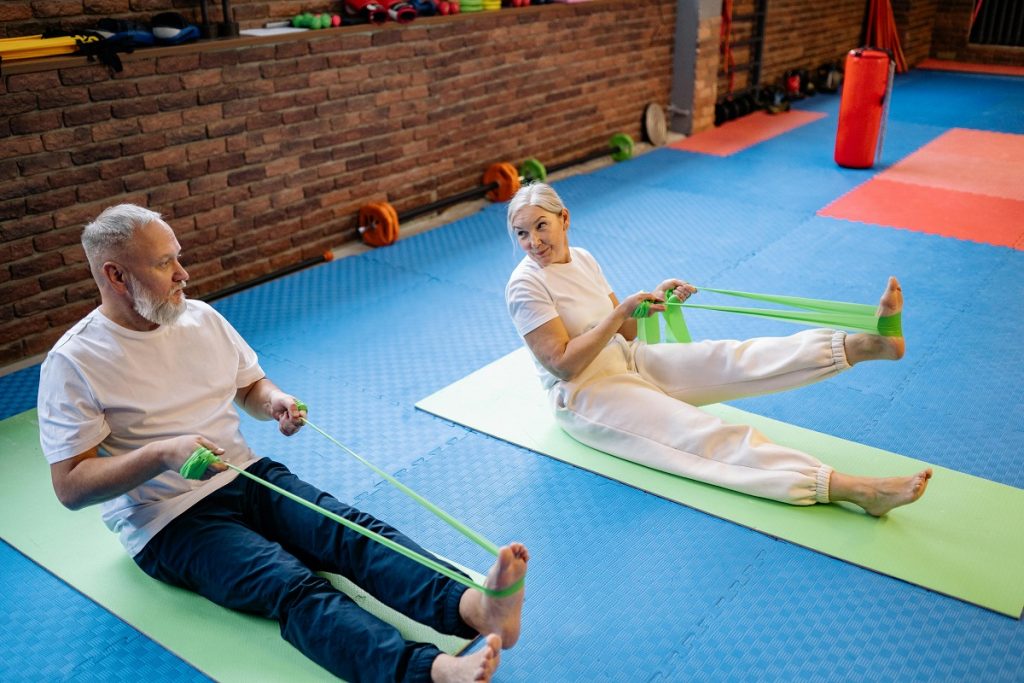
- Rehabilitation empowers recovery through exercises, therapies, and treatments, enhancing physical and mental well-being post-injury.
- A holistic approach in rehab addresses physical strength, emotional health, and social factors, promoting comprehensive healing.
- By building resilience and adopting a growth mindset, individuals can transform challenges into opportunities for personal development.
- Empowering for long-term success, rehab educates on health awareness and preventive care and fosters a proactive wellness approach.
- Rehab helps individuals not just recover but thrive beyond previous limitations.
Injuries can be a challenging setback, both physically and emotionally. However, with the right approach to rehabilitation, individuals can recover from their injuries and emerge stronger and more resilient than before. This blog will explore the transformative role of rehabilitation in restoring strength post-injury and how it can help individuals regain their physical and mental well-being.
Understanding the Importance of Rehabilitation
Rehabilitation plays a crucial role in the recovery process after an injury. It involves a combination of exercises, therapies, and treatments designed to help individuals regain strength, flexibility, and mobility. By working with skilled healthcare professionals, individuals can address their specific needs and goals to facilitate a successful recovery.
Emotional and Mental Health
Rehabilitation goes beyond just physical recovery; it’s a holistic approach that also focuses on emotional and mental health, recognizing these elements as critical to overall well-being. Through personalized treatment plans, rehabilitation assists in gradually restoring confidence and helping individuals adapt to their new physical capabilities. To facilitate this, you should work with a reputable physical therapy clinic to help you recover from the injury. The clinic can provide a conducive environment and supportive staff to make the rehabilitation process a positive experience.

Building Physical Strength
One of the primary goals of rehabilitation is to rebuild physical strength that may have been lost due to injury. Through targeted exercises and progressive training programs, individuals can gradually increase their muscle mass and improve their overall physical fitness. This helps recover from the injury and reduces the risk of future injuries by strengthening the body.
Natural Healing Processes
Building physical strength is not just about brute force; it’s about enhancing endurance, coordination, and flexibility to support the body’s natural healing process. A carefully curated rehabilitation program tailors exercise to the injured area and supporting muscle groups that contribute to overall stability and strength. Techniques such as resistance training, aquatic therapy, and Pilates can be integral parts of this process, each offering unique benefits contributing to a well-rounded recovery. These activities aim to restore the strength lost due to injury and focus on preventing future injuries by correcting imbalances and improving body mechanics. Individuals can see tangible progress with each step forward in rehabilitation, encouraging a positive mindset toward full recovery.
Enhancing Mental Resilience
In addition to rebuilding physical strength, rehabilitation also plays a significant role in enhancing mental resilience. Dealing with an injury can be mentally taxing, leading to feelings of frustration, anxiety, or depression. Through counseling, mindfulness practices, and support groups offered as part of rehabilitation programs, individuals can boost their mental well-being and develop coping strategies for dealing with setbacks.
Healthier Perspective
Enhancing mental resilience during rehabilitation encourages a healthier perspective on recovery and life post-injury. It involves fostering a growth mindset that sees challenges as opportunities for personal development rather than insurmountable obstacles. Such a mindset helps individuals to remain motivated and patient throughout the recovery process, knowing that every effort contributes to their ultimate goal of rehabilitation.
Encouraging Holistic Healing
Rehabilitation takes a holistic approach to healing by addressing the physical aspects of an injury and emotional and social factors that may impact recovery. By focusing on the individual as a whole person rather than just treating symptoms, rehabilitation programs promote comprehensive healing that empowers individuals to take charge of their health and well-being.
Body, Mind, and Spirit
Holistic healing recognizes the interconnectedness of the body, mind, and spirit and how each can significantly influence recovery. In the context of rehabilitation, this means incorporating practices that support all aspects of an individual’s health. Nutritional counseling, for example, can give the body the necessary nutrients to fuel recovery and rebuild strength.
Meditation and Stress Management
Similarly, incorporating meditation and stress management techniques can help alleviate mental stress, promoting a more restorative sleep pattern and enhancing the body’s natural healing capabilities. Group therapy and community support also offer emotional sustenance, fostering a sense of belonging and shared understanding that can be deeply healing. By integrating these multifaceted approaches, rehabilitation programs can offer a more comprehensive path to recovery, ensuring that individuals not only recuperate from their physical injuries but also achieve a balance and well-being that encompasses their entire being.
Empowering Individuals for Long-Term Success
Ultimately, rehabilitation aims to empower individuals for long-term success by equipping them with the tools and knowledge they need to maintain their health and prevent future injuries. By embracing a proactive approach to wellness through regular exercise, healthy habits, and ongoing self-care practices learned during rehabilitation, individuals can continue to build on their strengths long after completing their program.
Education and Awareness
Empowering individuals for long-term success encompasses physical fitness, rehabilitation, education, and awareness about their bodies and health. Throughout the rehabilitation process, individuals gain insights into the mechanics of their injuries and the preventive measures they can adopt to avoid future occurrences. This knowledge, combined with a personalized exercise regimen and lifestyle adjustments, cultivates a proactive stance toward health that can significantly diminish re-injury risk.
In conclusion, rehabilitation plays a transformative role in restoring strength post-injury by helping individuals rebuild physical strength, enhance mental resilience, encourage holistic healing, and empower long-term success. By investing in proper rehabilitation following an injury, individuals can recover and thrive beyond their previous limitations. If you or someone you know is dealing with an injury or recovering from one, consider exploring the benefits of rehabilitation as a pathway toward revitalizing resilience and reclaiming your health.
